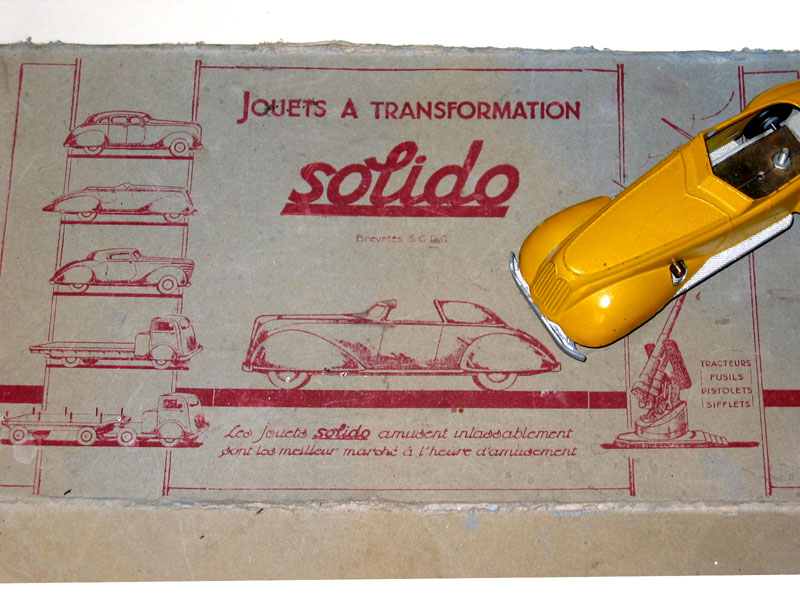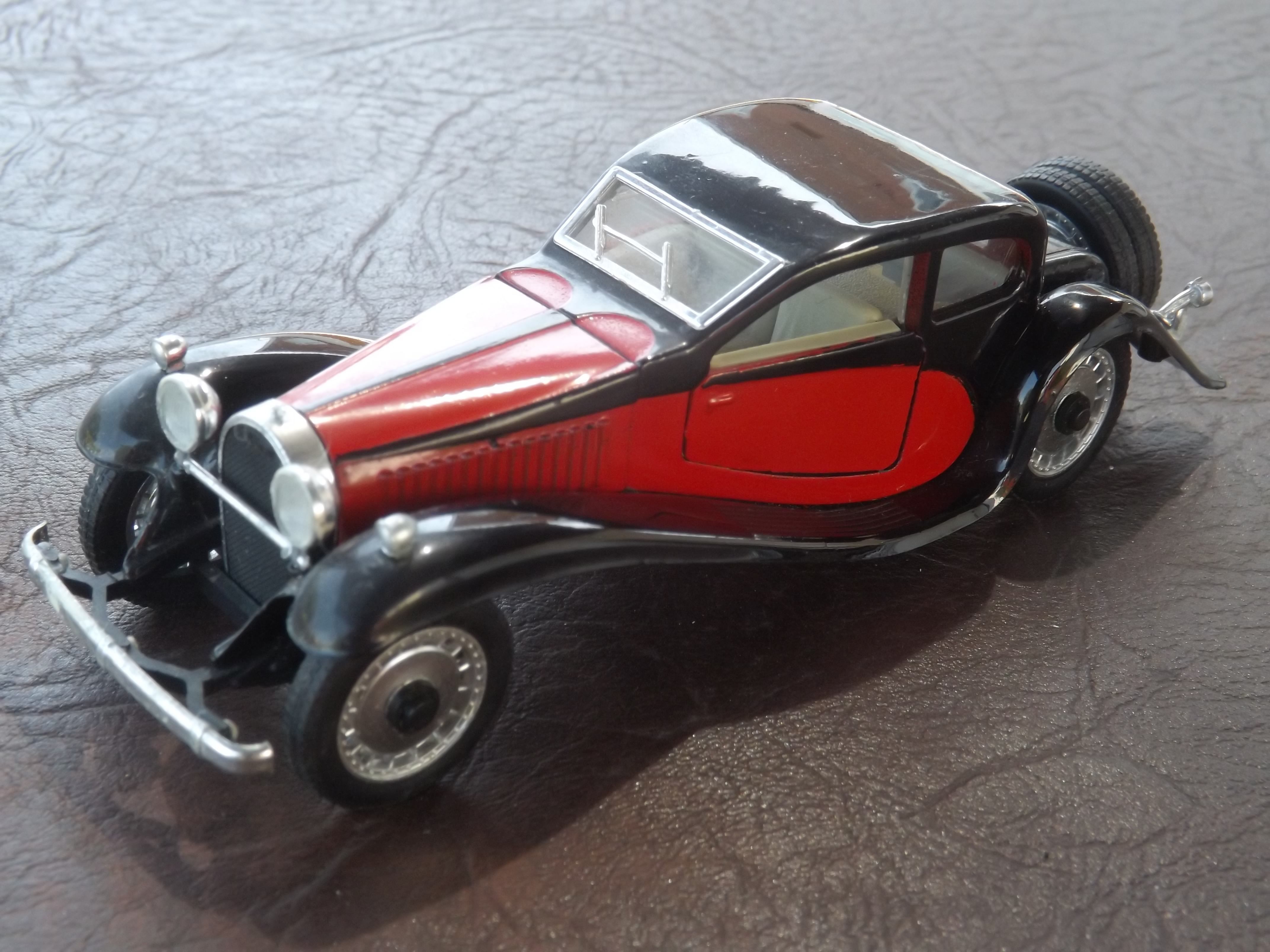|
Polistil
Polistil S.p.A. (initially called Politoys) is an Italian toy brand and former manufacturing company headquartered in Milan, with production center in Chiari, near Brescia. Polistil specialized in die-cast and plastic scale model vehicles of all sizes. The company also made toy and model tanks, dolls, robots and TV tie-ins. After a 33-year span, and a collaboration with Tonka, Polistil went out of business in 1993, but now is a brand under the May Cheong Group (owner of the brand Maisto), along with the name of former competitor Bburago. Traditionally, the principal Italian competitors to Polistil were Mercury, Mebetoys, and the shorter run Ediltoys. History The origins of Politoys as a company are somewhat unclear. The company began as "Politoys APS" about 1960, and started production of 100 plastic cars in 1:41 scale (Sinclair 1979, pp. 387–388). Some of these were contemporary cars and some were veteran vehicles – like an Alfa racing car from the late 'teens and an ... [...More Info...] [...Related Items...] OR: [Wikipedia] [Google] [Baidu] |
Maisto
Maisto is a brand of scale model vehicles introduced and owned by May Cheong Group, a Chinese company founded in 1967 in Hong Kong by brothers P.Y. Ngan and Y.C Ngan. The company has also subsidiaries in the United States (based in Fontana, California), France, and China.About us on MCG website MCG also owns other model car brands such as Italian former company (acquired assets and right to brand in 2006)Bburago brand history /ref> Products were initially commercialised under the "MC Toy" (using the initials of the company) brand. [...More Info...] [...Related Items...] OR: [Wikipedia] [Google] [Baidu] |
Martoys
Bburago is an Italian brand and former manufacturing company of toys and die-cast toy, die-cast scale model model car, cars. The company was based in Burago di Molgora, where all products were made from 1974 to 2005. At its most popular, Bburago's main competitors were Politoys and Maisto, the latter of which was to become dominant in the 1:18 market segment around 2000. In 2006, Hong Kong-based Maisto, May Cheong Group (owner of the Maisto and Polistil brands) acquired rights to the "Bburago" brand, taking over the production and commercialization of its die-cast model vehicles, which are made in China. Martoys The company was founded as "Martoys" by the Besana brothers, Ugo, Martino, and Mario, who sold their first well-known brand Mebetoys to Mattel. For this brand new line, only models in 1:24 scale were produced. In 1976, after only two years, the Besanas renamed the brand "Bburago" (with two 'B's at the beginning of the name). It is said that the change came because of ... [...More Info...] [...Related Items...] OR: [Wikipedia] [Google] [Baidu] |
Bburago
Bburago is an Italian brand and former manufacturing company of toys and die-cast scale model cars. The company was based in Burago di Molgora, where all products were made from 1974 to 2005. At its most popular, Bburago's main competitors were Politoys and Maisto, the latter of which was to become dominant in the 1:18 market segment around 2000. In 2006, Hong Kong-based May Cheong Group (owner of the Maisto and Polistil brands) acquired rights to the "Bburago" brand, taking over the production and commercialization of its die-cast model vehicles, which are made in China. Martoys The company was founded as "Martoys" by the Besana brothers, Ugo, Martino, and Mario, who sold their first well-known brand Mebetoys to Mattel. For this brand new line, only models in 1:24 scale were produced. In 1976, after only two years, the Besanas renamed the brand "Bburago" (with two 'B's at the beginning of the name). It is said that the change came because of possible confusion with the cla ... [...More Info...] [...Related Items...] OR: [Wikipedia] [Google] [Baidu] |
Solido
Solido is a French manufacturing company based in Oulins, west of Paris, which produces die-cast scale model cars, military vehicles, and commercial vehicles. Vehicles are usually made of zamac alloy in varying scales. Typically, Solido's main competition in France was Norev, but internationally, Polistil, Corgi Toys, Dinky Toys, Mercury, and Tekno produced similar style toys. History "Solido" was the brand name established in 1930 by Ferdinand de Vazeilles of the "Fonderie de précision de Nanterre" in the western Paris suburb of Nanterre, France. The company was one of the first European firms to champion the "virtues of unbreakable diecast metal". Vazeilles' first product was a metal Gergovia brand spark plug on wheels. In 1932, some of the first vehicle kits were made in Zamac, labeled with the theme "toys with transformations" referring to their various bodies fitting on standard chassis, like the real coach builders and car manufacturers did at that time. Some were fitte ... [...More Info...] [...Related Items...] OR: [Wikipedia] [Google] [Baidu] |
Mebetoys
Meccanica Bessana Toys (mostly known for its acronym and tradename Mebetoys), was an Italian toy manufacturer that produced die-cast scale model cars during the 1960s and 1970s. The company was purchased by Mattel in 1969, which continued commercialising Mebetoy as one of its brands. Mebetoy's main competition in Italy was the earlier trailblazer Mercury, Polistil and the rarer Ediltoys. History Mebetoys was started by Ugo and Martino Besana in 1959 in Oleggio Castello, Italy. Their brother Mario Besana joined the company in 1967, one year after the company started. A diecast car line was started that same year, rather late compared to the entry of many other companies in the early-to-mid-1950s. In detail and proportion, Mebetoys joined superior model producers of French Solido and fellow Italian Polistil, in many ways these became the triumvirate of diecast models on the European continent, though Danish Tekno and Italian Rio Models also were important. Models were exa ... [...More Info...] [...Related Items...] OR: [Wikipedia] [Google] [Baidu] |
Model Car
A model car, or toy car, is a miniature representation of an automobile. Other miniature motor vehicles, such as trucks, buses, or even ATVs, etc. are often included in this general category. Because many miniature vehicles were originally aimed at children as playthings, there is no precise difference between a model car and a toy car, yet the word 'model' implies either assembly required or the accurate rendering of an actual vehicle at smaller scale. The kit building hobby became popular through the 1950s, while the collecting of miniatures by adults started to pick up momentum around 1970. Precision-detailed miniatures made specifically for adults are a significant part of the market since the mid-1980s. The scope of the vehicles involved in the hobby, according to Louis Heilbroner Hertz author of ''The Complete Book of Building and Collecting Model Automobiles'', encompasses "ordinary or stock automobiles, racing cars ( hellip;, buses, trucks, specialized service vehicles ... [...More Info...] [...Related Items...] OR: [Wikipedia] [Google] [Baidu] |
Dinky Toys
Dinky Toys was the brand name for a range of die-cast toy, die-cast zamak zinc alloy scale model model car, vehicles produced by British toy company Meccano Ltd. They were made in England from 1934 to 1979, at a factory in Binns Road in Liverpool. Dinky Toys were among the most popular die-cast vehicles ever made – pre-dating other popular die-cast marques, including Corgi Toys, Corgi, Matchbox (brand), Matchbox and Mattel's Hot Wheels. Vehicles commercialised under the "Dinky" name include model car, cars, model commercial vehicle, trucks, model aircraft, aircraft, model military vehicle, military, model ship, ships. Pre-war history Frank Hornby established Meccano Ltd. in 1908 to make metal construction sets. The company later moved into model railways, with its O scale, O gauge clockwork trains appearing in 1920. In the early 1930s, Meccano made many types of tinplate and other metal cars, such as its Morgan and Birmingham Small Arms Company, BSA three-wheelers, mostl ... [...More Info...] [...Related Items...] OR: [Wikipedia] [Google] [Baidu] |
Mercury (toy Manufacturer)
Mercury was an Italian manufacturing company of die-cast toy, die-cast scale model model car, cars. Based in Turin, Mercury was active from 1932 until 1980. Along with Dinky Toys in England, Mercury was a pioneer in 1:43 scale diecast toys made in Europe. Today, Mercury models are rather rare and not easy to find. The company logo was the word Mercury within a rectangle with a round toothed gear behind the company name. History As with many toy car makers, Turin-based Mercury started as a diecaster of small parts. It produced metal parts mainly for auto companies. Later an importer for German Märklin, the company was started in 1932, by Attilio Clemente and Antonio Cravero, but its first toy was a gun produced about 1939. The company first began making toy cars just after World War II, so is one of the earliest diecast model makers preceding Corgi and many others and it was the earliest producer in Italy. In Italy there was little competition for Mercury through most of the ... [...More Info...] [...Related Items...] OR: [Wikipedia] [Google] [Baidu] |
Schuco
Schuco is a German manufacturing company founded in 1912 by Heinrich Müller and the businessman Heinrich Schreyer in Nuremberg Germany's toy capital since early days. The company's specialty was making toy reproductions of cars and trucks in tin, plastic and die-cast. The company went bankrupt in 1976 but was reorganized in 1993 and then totally independent again by 1996. Some of the products currently commercialised by Schuco include die-cast scale model cars, aircraft, ships, and commercial vehicles History Originally named Spielzeugfirma Schreyer & Co, the company changed its name to the more succinct Schuco in 1921 (likely a derivation of Schreyer und Company. At its beginnings, the company made unique clockwork tin toys. Some of these were clever in that, instead of using a key, one would wind an arm or another feature. In the 1920s Schuco introduced its famous Pick-Pick bird (over 20 million were made up until the 1960s). A wind-up mouse, a dancing mouse and trotting d ... [...More Info...] [...Related Items...] OR: [Wikipedia] [Google] [Baidu] |
Rio Models
RIO Models was an Italian manufacturer of diecast and plastic 1:43 scale model cars, based in Cernobbio, Italy. History All started in 1952 when three brothers, Reno, Nilo and Diego, founded the ''Fratelli Tattarletti'' (Tattarletti brothers) company. The small and young company, which in 1961 changed its name to ''ttttt Stampoplastica'', limited itself to diecast works for other companies, e.g. Dell'Orto, Vespa, Rivarossi and Dugu. The three Tattarletti brothers started Rio Models as an independent company about 1961, or in 1962. Besides customary etymologies for the name 'Rio' (the Italian word for creek), the origin as a company name is unclear, although two of the three founders' names are also those of rivers, Reno and Nilo. Later, in 19t72, Nilo, one of the three founders, leave the company to found, along with a couple of business partners, ''Brumm'' another company producing diecast metal model cars and horse-drawn carriages. According to Sinclair it was a brother-in- ... [...More Info...] [...Related Items...] OR: [Wikipedia] [Google] [Baidu] |
Edil
''Dictionary of the Irish Language: Based Mainly on Old and Middle Irish Materials'' (also called "the DIL"), published by the Royal Irish Academy, is the definitive dictionary of the origins of the Irish language, specifically the Old Irish, Middle Irish, and Early Modern Irish stages up to c. 1700; the modern language is not included. The original idea for a comprehensive dictionary of early Irish was conceived in 1852 by the two preeminent Irish linguists of the time, John O'Donovan and Eugene O'Curry; however, it was more than sixty years until the first fascicle (the letter D as far as the word , compiled by Carl J. S. Marstrander) was published in 1913. It was more than sixty years again until the final fascicle (only one page long and consisting of words beginning with H) was published in 1976 under the editorship of E. G. Quin. The full dictionary comprises about 2500 pages, but a compact edition (four original pages photoreduced onto one page) was published in 1983 (), ... [...More Info...] [...Related Items...] OR: [Wikipedia] [Google] [Baidu] |







